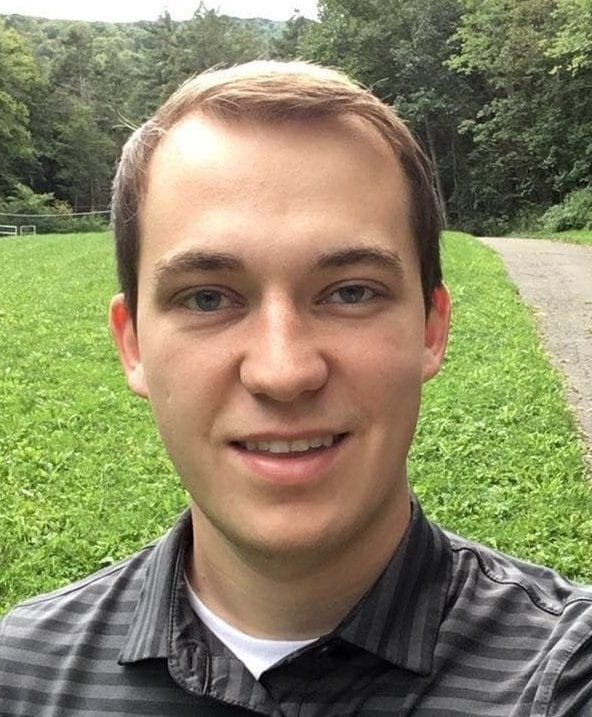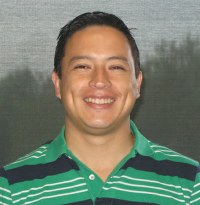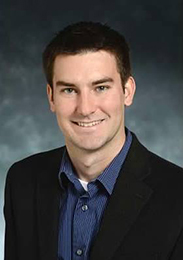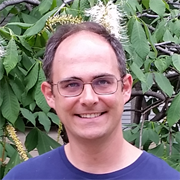Current Members
 Paul Markowski is a Distinguished Professor of Meteorology and he became interested in meteorology as a result of the 31 May 1985 tornado outbreak in western Pennsylvania. He received a B.S. in Meteorology from Penn State University, and an M.S. and Ph.D. in Meteorology from the University of Oklahoma. He has been on the faculty in the Department of Meteorology and Atmospheric Science at Penn State since 2001. He co-organized the Second Verification of the Origins of Rotation in Tornadoes Experiment (VORTEX2), served as the Chief Editor of the American Meteorological Society’s Journal of Weather and Forecasting from 2012–2017, serves on the President’s Advisory Committee on University Relations for the University Corporation for Atmospheric Research, and is a fellow of the American Meteorological Society. Thanks to many generous colleagues, he has been recognized for his severe storms research as the 2015 recipient of the AMS’ Meisinger Award, the 2013 recipient of the NWA’s Fujita Award, and the 2011 recipient of the European Severe Storms Laboratory’s Dotzek Award. He has served as the Head of the Department of Meteorology & Atmospheric Science since 2023, and is the faculty partner for the Penn State Men’s Golf Team. He enjoys spending time with his family, especially playing sports with his two sons. In a past life he played a lot of baseball, and now plays a lot of golf. Paul Markowski’s CV Google Scholar ORCID
Paul Markowski is a Distinguished Professor of Meteorology and he became interested in meteorology as a result of the 31 May 1985 tornado outbreak in western Pennsylvania. He received a B.S. in Meteorology from Penn State University, and an M.S. and Ph.D. in Meteorology from the University of Oklahoma. He has been on the faculty in the Department of Meteorology and Atmospheric Science at Penn State since 2001. He co-organized the Second Verification of the Origins of Rotation in Tornadoes Experiment (VORTEX2), served as the Chief Editor of the American Meteorological Society’s Journal of Weather and Forecasting from 2012–2017, serves on the President’s Advisory Committee on University Relations for the University Corporation for Atmospheric Research, and is a fellow of the American Meteorological Society. Thanks to many generous colleagues, he has been recognized for his severe storms research as the 2015 recipient of the AMS’ Meisinger Award, the 2013 recipient of the NWA’s Fujita Award, and the 2011 recipient of the European Severe Storms Laboratory’s Dotzek Award. He has served as the Head of the Department of Meteorology & Atmospheric Science since 2023, and is the faculty partner for the Penn State Men’s Golf Team. He enjoys spending time with his family, especially playing sports with his two sons. In a past life he played a lot of baseball, and now plays a lot of golf. Paul Markowski’s CV Google Scholar ORCID
Elissa Bartos (eas558@psu.edu) is an Ph.D. student who joined the group in August, 2018, after earning a B.S. in Meteorology from Texas A&M University in May 2018 (and a B.A. in History from the University of Texas at Austin in May, 2009). Working with Profs. Markowski and Richardson, Elissa is studying the thermodynamic and buoyancy fields within supercell storms using observations above the surface from pseudo-Lagrangian balloon drifters. The initial phase of her research is contained in her October, 2020 M.S. thesis, entitled “Three-Dimensional Thermodynamic Observations in Supercell Thunderstorms from Swarms of Balloon-Borne Probes.” Outside of meteorology, Elissa is an active target archer who shoots an Olympic recurve style bow. She could probably shoot down her own pseudo-Lagrangian drifters, but this would jeopardize her thesis research.
 Luke LeBel (ljl5305@psu.edu) is a Ph.D. student who joined the group in August, 2020. He is investigating convection initiation using high-resolution numerical simulations. The first phase of his research was the basis for his 2022 M.S. thesis, entitled “An Analysis of the Impact of Vertical Wind Shear on Convection Initiation using Large-Eddy Simulations: Importance of Wake Entrainment.” Before beginning graduate school, Luke received his B.S. in Atmospheric Science from the University at Albany. His undergraduate work involved investigating the impact of terrain on the 31 May 1998 Mechanicville, NY tornado. Outside of meteorology, Luke enjoys hiking, camping, and playing tennis and golf.
Luke LeBel (ljl5305@psu.edu) is a Ph.D. student who joined the group in August, 2020. He is investigating convection initiation using high-resolution numerical simulations. The first phase of his research was the basis for his 2022 M.S. thesis, entitled “An Analysis of the Impact of Vertical Wind Shear on Convection Initiation using Large-Eddy Simulations: Importance of Wake Entrainment.” Before beginning graduate school, Luke received his B.S. in Atmospheric Science from the University at Albany. His undergraduate work involved investigating the impact of terrain on the 31 May 1998 Mechanicville, NY tornado. Outside of meteorology, Luke enjoys hiking, camping, and playing tennis and golf.
 Brandon Garcia (bag5545@psu.edu) is a Ph.D. student who joined the Markowski Research Group in August 2022. Brandon received an M.S. degree in August, 2024 (M.S. Thesis: “Differentiating Between Tornadic and Nontornadic Supercell Synoptic Environments Using Self-Organizing Maps”). Before coming to Penn State, Brandon earned an B.S. in Atmospheric Sciences from the University of Illinois at Urbana-Champaign (UIUC). At UIUC, Brandon researched the effects that the Olympic Mountains of Washington State have on frontal strength, propagation speed, and precipitation using Weather Research and Forecasting (WRF) output. Brandon’s Ph.D. research direction is still evolving, but it will almost certainly target an interesting application of machine learning to understanding or predicting convective storms. Outside of his classes and research, Brandon enjoys hiking, playing video games, and metal detecting.
Brandon Garcia (bag5545@psu.edu) is a Ph.D. student who joined the Markowski Research Group in August 2022. Brandon received an M.S. degree in August, 2024 (M.S. Thesis: “Differentiating Between Tornadic and Nontornadic Supercell Synoptic Environments Using Self-Organizing Maps”). Before coming to Penn State, Brandon earned an B.S. in Atmospheric Sciences from the University of Illinois at Urbana-Champaign (UIUC). At UIUC, Brandon researched the effects that the Olympic Mountains of Washington State have on frontal strength, propagation speed, and precipitation using Weather Research and Forecasting (WRF) output. Brandon’s Ph.D. research direction is still evolving, but it will almost certainly target an interesting application of machine learning to understanding or predicting convective storms. Outside of his classes and research, Brandon enjoys hiking, playing video games, and metal detecting.

Ben Henry (bsh5393@psu.edu) is an M.S. student who joined the Markowski Research Group in August 2023. Before joining the group, he earned his B.S. and M.Eng. in Environmental Engineering (Geological Focus) from Princeton University. For his undergraduate senior thesis, Ben produced a climatology of tornadoes in New Jersey and Eastern Pennsylvania, with a focus on tropical cyclone tornado outbreaks in the region, exploring how tropical/extratropical modes affect tornadic supercell structure. Aside from his time at Princeton, Ben has participated in the 2021 NOAA HWT Spring Forecasting Experiment and was an intern at the NWS Mount Holly WFO. While he’s still figuring out his research direction at Penn State, he’s confident that it will involve an aspect of supercell thunderstorms and tornadoes. Outside of academia, Ben enjoys playing video games, cooking, and dancing.
Alumni
 Kiley Allen received her M.S. degree in August, 2024 (M.S. Thesis: “On the Use of the Thin-Boundary-Layer Equations in Numerical Simulations of Supercell Storms”). Kiley was co-advised by Dr. Paul Markowski and Dr. Ying Pan. Kiley’s research was at the intersection of severe storms and turbulence modeling. Her M.S. research studied the effects of surface drag on supercell thunderstorms using numerical simulations that employed the so-called “thin-boundary-layer equations” (TBLE). Before coming to Penn State, Kiley earned a B.S. in Meteorology from the University of Oklahoma in 2022. Kiley now works as a meteorological reporting analyst with GroundWork Renewables.
Kiley Allen received her M.S. degree in August, 2024 (M.S. Thesis: “On the Use of the Thin-Boundary-Layer Equations in Numerical Simulations of Supercell Storms”). Kiley was co-advised by Dr. Paul Markowski and Dr. Ying Pan. Kiley’s research was at the intersection of severe storms and turbulence modeling. Her M.S. research studied the effects of surface drag on supercell thunderstorms using numerical simulations that employed the so-called “thin-boundary-layer equations” (TBLE). Before coming to Penn State, Kiley earned a B.S. in Meteorology from the University of Oklahoma in 2022. Kiley now works as a meteorological reporting analyst with GroundWork Renewables.
 Kyle Hunt received his M.S. degree in May, 2024 (M.S. Thesis: “A Numerical Study of How Convective Storms Modify Their Environments”), after which he returned to West Point to serve as an instructor. Before coming to Penn State, Captain Hunt earned a B.S. in Environmental Science from the United States Military Academy in 2014. In between his first stint at West Point and his time at Penn State, he held a variety of positions in the Army, including two deployments.
Kyle Hunt received his M.S. degree in May, 2024 (M.S. Thesis: “A Numerical Study of How Convective Storms Modify Their Environments”), after which he returned to West Point to serve as an instructor. Before coming to Penn State, Captain Hunt earned a B.S. in Environmental Science from the United States Military Academy in 2014. In between his first stint at West Point and his time at Penn State, he held a variety of positions in the Army, including two deployments.
 Aaron Wang received his Ph.D. in June, 2022 (Dissertation: “Constructing Modeling Approaches of Near-Surface Turbulence in Large-Eddy Simulations of Tornadoes”). He was the 2022 recipient of the John C. Wyngaard Graduate Research Award. Prior to coming to Penn State, Aaron received his B.S. in both Atmospheric Sciences and Mechanical Engineering in 2014, and an M.S. in Atmospheric Sciences in 2016, at National Taiwan University. While in Taiwan, he served his substitute military service in the Weather Forecast Center of Central Weather Bureau in Taiwan. Aaron presently hold the title of Earth Scientist at the Pacific Northwest National Laboratory.
Aaron Wang received his Ph.D. in June, 2022 (Dissertation: “Constructing Modeling Approaches of Near-Surface Turbulence in Large-Eddy Simulations of Tornadoes”). He was the 2022 recipient of the John C. Wyngaard Graduate Research Award. Prior to coming to Penn State, Aaron received his B.S. in both Atmospheric Sciences and Mechanical Engineering in 2014, and an M.S. in Atmospheric Sciences in 2016, at National Taiwan University. While in Taiwan, he served his substitute military service in the Weather Forecast Center of Central Weather Bureau in Taiwan. Aaron presently hold the title of Earth Scientist at the Pacific Northwest National Laboratory.
Shawn Murdzek received an M.S. degree in May, 2019 (M.S. thesis: “Processes Contributing to Tornadogenesis Failure in the 26 May 2010 Supercell near Prospect Valley, CO”), and a Ph.D. in June, 2022 (Dissertation: “Changes in the Sensitivity of Convective Storms and Tornadoes to the Microphysics Parameterization in Environments with Different Lifting Condensation Levels”). Shawn was co-advised by Profs. Richardson and Markowski, and was a National Science Foundation Graduate Fellow during the course of his Ph.D. studies. He was also the 2021 recipient of the John C. Wyngaard Graduate Research Award. He received his B.S. and M.S. degrees simultaneously at Penn State as an IUG (Integrated Undergraduate-Graduate) student. Currently, Shawn is a research scientist with the Cooperative Institute for Research in Environmental Sciences (CIRES) in Boulder, Colorado.
Dylan Steinkruger received his M.S. in May, 2020 (M.S. thesis: “An Artificially Intelligent System for the Automated Issuance of Tornado Warnings in Simulated Convective Storms”). He was also the 2020 recipient of the John C. Wyngaard Graduate Research Award. He joined the group in August, 2018, after receiving a B.S. in meteorology at the University of Nebraska-Lincoln. Outside of meteorology, Dylan enjoys sprint car racing and football officiating. He currently works for Flash Scientific Technology, but may return someday to complete the Ph.D.
Branden Katona received an M.S. degree in May, 2016 (M.S. thesis: “Assessing the Influence of Topography on Convective Storm Environments Using High-resolution Operational Model Output”), and a Ph.D. in August, 2020 (Dissertation: “An Investigation of the Influence of Complex Terrain on Severe Storms and their Environments”). He joined the group in August, 2014, after receiving a B.S. in meteorology from the University of Oklahoma. After a stint as a research scientist at the Cooperative Institute for Severe and High-Impact Weather Research and Operations (CIWRO) in Norman, Oklahoma, Branden now works for State Farm Insurance in Dallas, Texas, as a catastrophe risk analyst.
Giovanni Jiménez-Sánchez received his Ph.D. in December, 2018 (Dissertation: “The Orinoco Low-Level Jet”). He is now the Deputy Director of Meteorology at the National Institute of Hydrology, Meteorology and Environmental Studies in Colombia. Before coming to Penn State, he earned a bachelor’s degree in aviation business administration (Escuela Militar de Aviación “Marco Fidel Suárez”) and an M.S. in meteorology (Universidad Nacional de Colombia). The Orinoco low-level jet was a particularly interesting dynamics problem in that neither the Holton nor Blackadar mechanisms could explain the phenomenon.
Valerian Jewtoukoff (“Val”) was a postdoctoral scholar in the group from May, 2016–December, 2017, after completing a Ph.D. in meteorology and M.S. in atmospheric and oceanic dynamics at the Université Pierre et Marie Curie in Paris. His Ph.D. and M.S. research was on balloon-borne observations and simulations of gravity waves, looking at their origins, propagation, and impacts. Prior to focusing on meteorology, Val received two B.S. degrees, one in physics and one in geophysics, from the Université Paris Diderot in Paris. Val’s work at PSU used numerical simulations to investigate how “surges” of cold air can disrupt or intensify tornadoes. Val is an avid skier.
Michael Colbert received his M.S. in 2017 (M.S. Thesis: “Exploring the Sensitivity of Convective Storm Characteristics and Dynamics to Grid Spacing in Convection-Allowing North American Mesoscale Forecast System Simulations”). Michael’s work examined the ability of the North American Model (NAM) 4-km and 1.33-km nests to realistically simulate severe thunderstorm behavior and dynamics. He currently works for the National Weather Service in State College.
Abdullah Kahraman was a visiting scholar from Turkey from August 2013 to August 2014. He received his Ph.D. in Meteorological Engineering from Istanbul Technical University in the fall of 2016. He has studied Turkish tornadoes and severe hailstorms extensively. After briefly serving on the faculty of Ondokuz Mayıs University in Samsun, Turkey, he now works as a researcher at Newcastle University (England).
Jim Marquis was a graduate student in Prof. Yvette Richardson’s group, and from late 2010 through late 2014, he was a postdoctoral scholar who collaborated with both Profs. Richardson and Markowski. Jim blazed a trail on an extremely difficult problem with working as a post-doc: ensemble Kalman filter assimilation of Doppler On Wheels and mobile mesonet data obtained during the VORTEX2 intercept of the Goshen County (Wyoming) tornadic supercell on 5 June 2009. After leaving Penn State, Jim worked at the Center for Severe Weather Research for a number of years before heading even farther west. He is currently a scientist at the Pacific Northwest National Laboratory in Richland, Washington.
Chris Nowotarski received his M.S. in 2010 (M.S. Thesis: “The Characteristics of Numerically Simulated Supercell Storms Situated over Statically Stable Boundary Layers”) and Ph.D. in 2013 (Dissertation: “Simulating Supercell Thunderstorms in a Convective Boundary Layer: Effects on Storm and Boundary Layer Properties”). He has been on the faculty of the Department of Atmospheric Sciences at Texas A&M University since January, 2014. His website can be reached by clicking here.
Tim Hatlee was co-advised by Prof. Yvette Richardson and received his M.S. in 2012 (M.S. Thesis: “The Pretornadic and Tornadogenesis Phases of the 12 May 2010 Supercell of Clinton, Oklahoma, Intercepted by VORTEX2”). Tim currently works in New York City for the Skills Lab as a Skills Fellow (http://www.nycskillslab.org/skills_fellows/tim-hatlee/). Quoting their website, “The Skills Fellowship Program is comprised of innovative teachers, known as Skills Fellows, who desire to enhance their practices by making 21st century skills development more prominent in their instruction, assessment and feedback practices. Each Skills Fellow receives support from an instructional Skills Coach in order to more effectively integrate 21st century skills into their instructional practice.”

Andrew Oberthaler received his M.S. in 2011 (M.S. Thesis: “The Effect of Cloud Shading on Squall Lines: A Numerical Simulation Study”). Since departing Penn State, he has worked for Ubimet (a private weather forecasting firm in Vienna, Austria, where he was responsible for weather forecasting for Formula 1 auto races worldwide), TD Reply, and IndeeWork, the latter two happening after re-tooling himself in data mining and machine learning. Most recently, he has been working as a freelance data scientist based in Barcelona, though he has been a contractor for an energy company in Hamburg, Germany (he’s working on getting Hamburg to carbon neutrality). On the side, he has played professional baseball for the Vienna Wanderers (they won two Austrian national titles), the Berlin Flamingos, and CBS Barcelona. This act never would have been possible without the player development program of the METEO IM softball team, with whom Andrew played in 2010.
Mario Majcen hails from Croatia and, after completing his M.S. at the University of Utah, joined the group in 2005. He received his Ph.D. in 2009 (Dissertation: “A Conceptual Model of Nontornadic Supercells”). Shortly thereafter, he joined the faculty at the California University of Pennsylvania, where he has been ever since. While at Penn State, he was well-known for his superior skills in the popular game Taboo.
Jeff Frame was admitted into the group in 2001 despite being a University of Michigan graduate. He (along with Christina Hannon) became the first graduate of the Markowski Research Group when he received his M.S. in 2003 (M.S. Thesis: “The Interaction of Simulated Squall Lines with Idealized Terrain”). Jeff remained at Penn State for his Ph.D., which was conferred in 2008 (Dissertation: “The Dynamical Influences of Cloud Shading on Simulated Supercell Thunderstorms”). He has been a Clinical Assistant Professor in the Department of Atmospheric Sciences at the University of Illinois since 2010.
Richard James began his Penn State career in Prof. Mike Fritsch’s group. After a brief hiatus from State College, he returned in 2008 to complete his Ph.D. (Dissertation: “A Numerical Investigation of the Effects of Dry Air Aloft on Deep Convection”). He currently resides in Athens, Georgia, and works for Prescient Weather Ltd, a small company based in State College that “provides information and strategies to manage weather and climate risk.”
Zack Byko was co-advised by Prof. Yvette Richardson and received his B.S. and M.S. (M.S. Thesis: “Examining Descending Reflectivity Cores Using High-Resolution Radar Data and a Numerical Simulation”) in 2007 through PSU’s Integrated Undergraduate–Graduate (IUG) program. Zack is a Senior Strategic Sourcing Manager for Mars Chocolate.

Jeremy Ross overlapped at Penn State with Paul Markowski when both were undergraduates back in the 1990s. Jeremy received his B.S., M.S., and Ph.D. from Penn State, with most of his M.S. work and Ph.D. work being completed while working in Prof. Mike Fritsch’s group. After Mike retired, Jeremy finished his Ph.D. within the Markowski Research Group in 2005 (Dissertation: “Reexamining Analog Forecasting Using NCEP/NCAR Reanalyses”). In the final days of his Ph.D. work, Jeremy and Paul won the IM golf championship as a two-person team. Jeremy now resides in nearby Zion, Pennsylvania, and works for Prescient Weather Ltd in State College.
Chris Shabbott received his M.S. in 2003 (M.S. Thesis: “Surface Thermodynamic Observations within the Forward-Flank Downdrafts of Tornadic and Nontornadic Supercells”) after a strong performance as a Penn State undergraduate (B.S., 2001). Chris now resides near Stamford, Connecticut, and works for Castleton Commodities International LLC (formerly Louis Dreyfus Highbridge Energy).

John Stonitsch was one of two graduate students in the group who analyzed data from the International H2O Project (M.S. Thesis: “The Fine-Scale Structure and Evolution of Boundary Layer Wind and Thermodynamic Fields along a Front Observed during IHOP”). John’s M.S. was earned in 2005, and before entering the graduate program, he received his B.S. in meteorology from Penn State in 2003. John has worked in the energy sector in the Houston area as an extremely skillful weather forecaster since leaving the group in 2005.
Christina Henderson (née Hannon) joined the group in August, 2001, after earning her B.S. in meteorology from the University of Oklahoma. She (along with Jeff Frame) became the first graduate of the Markowski Research Group when she received her M.S. in 2003 (M.S. Thesis: “An Investigation of Convection Initiation ‘Failure’ on 12 June 2002 Using Mobile Doppler Radars”). Her M.S. research used overdetermined dual-Doppler radar data obtained during an International H2O Project deployment in northwestern Oklahoma to investigate the failure of towering cumulus clouds to develop into thunderstorms. She has worked in the National Weather Service in the western Great Plains region since leaving Penn State. She now resides in Stratton, Nebraska.


















